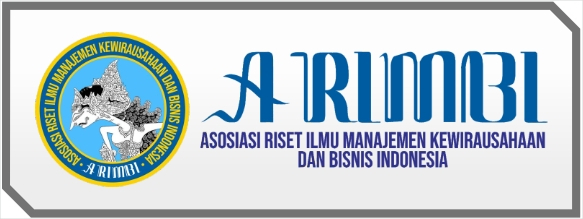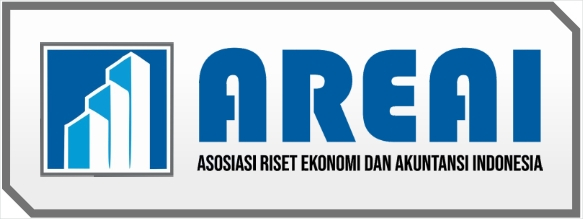Necessity Entrepreneurs: Drivers and Characteristics
DOI:
https://doi.org/10.55606/ijemr.v2i3.122Keywords:
COVID-19, necessity entrepreneurship, entrepreneurial drivers and characteristics, food and beveragesAbstract
On 11th March, 2020, World Health Organisation (WHO) declared COVID-19, a pandemic. Malaysia Government implemented ‘Movement Control Order’ or full lockdown on 18th March, 2020 causing unemployment to reach to 4.55% in 2020 and reached 5.3% in May 2020 - indicating the highest rate, for the past 20 years as reported by Department of Statistics Malaysia (DOSM). On the 1st April 2022, Malaysia transitioned to an endemic phase, leading to a gradual increase of its economic activities, especially opening up of more food and beverage services (F&B) businesses. This study examined the factors which are drivers and characteristics, which lead to necessity entrepreneurs (NE) preferably choose F&B services businesses. The two research questions are ‘What are the drivers of NE who are involved in the F&B services businesses?’ and ‘What are the entrepreneurial characteristics of NE who are involved in the F&B services businesses?’ Literature reviews were carried out on entrepreneurship, NE (Serviere’s Venture Creation Model for NE, 2010) and entrepreneurial characteristics (Ernst & Young’s Entrepreneur Model, 2011). The research design is an exploratory case study qualitative research with an in-depth semi-structured interview session, comprising of a pilot study, and a main study of 21 F&B services in Ipoh city. Thematic analysis was carried out with the ‘ATLAS.ti 23’ software. Findings suggested four novel drivers of NE, viz. family cohesion; inherited culinary skills; pursuit of culinary ambition; and unmotivated in job. Furthermore, eight novel characteristics of NE comprising perseverance; patience; money management; wellness; kinship; creativity; communication network; and self-discipline.
References
Acs, Z. J., Arenius, P., Hay, M., & Minniti, M. (2004). Global Entrepreneurship Monitor 2004 executive report. Babson College and London School of Business, pp. 1-48.
Altonji, J. G., Hayashi, F., & Kotlikoff, L. J. (1997). Parental altruism and inter vivos transfers: Theory and evidence. Journal of political economy, 105(6), 1121-1166.
Bank Negara Malaysia Annual Report (2021). Average monthly income and expenditure (including financial obligations) for households in different income groups, p. 16.
Ben-Ze'ev, A. (2001). The subtlety of emotions. MIT press.
Block, J. H., & Wagner, M. (2010). Necessity and opportunity entrepreneurs in Germany: characteristics and earnings differentials. Schmalenbach Business Review, 62(2), 154-174.
Boyd, R. L. (2005). Race, gender, and survivalist entrepreneurship in large northern cities during the Great Depression. The Journal of Socio-Economics, 34(3), 331-339.
Bryman, A. (2016). Social research methods. Oxford University Press.
Cantillon, R. (1755). An essay on commerce in general. In History of economic thought books.
Deli, F. (2011). Opportunity and necessity entrepreneurship: Local unemployment and the small firm effect. Journal of Management Policy and Practice, 12(4), 38-57.
Drucker, P. F. (1985). The discipline of innovation. Harvard business review, 63(3), 67-72.
Fairlie, R. W., & Fossen, F. M. (2020). Defining Opportunity versus Necessity Entrepreneurship: Two Components of Business Creation. In Change at home, in the labor market, and on the job., 48.
Jacob, S., & Furgerson, S. P. (2012). Writing interview protocols and conducting interviews:Tips for students new to the field of qualitative research. The Qualitative Report, 17(2), 1-10.
Liguori, E., & Winkler, C. (2020). From offline to online: challenges and opportunities for entrepreneurship education following the COVID-19 pandemic. Entrepreneurship Education and Pedagogy.
Lincoln, Y. S., & Guba, E. G. (1985). Naturalistic inquiry. Sage Publications.
Littunen, H., & Nittykangas, H. (2010). The rapid growth of young firms during various stages of entrepreneurship. Journal of Small Business and Enterprise Development, 17(1), 8-31.
Maksimov, V., Wang, S. L., & Luo, Y. (2017). Reducing poverty in the least developed countries: The role of small and medium enterprises. Journal of World Business, 52(2), 244-257.
McKibbin, W., & Fernando, R. (2020). The economic impact of COVID-19. Economics in the Time of COVID-19, 45.
O’Neill, A., (2021). Unemployment rate from 1999 to 2020. Statista.com. https://www.statista.com/statistics/319019/unemployment-rate-in-malaysia/
O'Shea, M. N. (2020, 03 05). Entrepreneur´s dissatisfaction: what it is and how to overcome it . Retrieved from oleoshop.
Pinelli, M. T. (2011). The DNA of the entrepreneur model. Nature or nurture? Decoding the DNA of the entrepreneur, Ernst & Young, p. 15.
Reynolds, P. D. (2015). Business creation stability: why is it so hard to increase entrepreneurship? Foundations and Trends® in Entrepreneurship, 10(5–6), 321-475.
Serviere, L. (2010). Forced to entrepreneurship: Modeling the factors behind necessity entrepreneurship. Journal of Business and Entrepreneurship, 22(1), 37-53.
Shane, S. A. (2003). A general theory of entrepreneurship: The individual-opportunity nexus. Edward Elgar Publishing.
Shibata, I. (2021). The distributional impact of recessions: The global financial crisis and the COVID-19 pandemic recession. Journal of Economics and Business, 115, 105971.
Solymossy, E. (1997). Push/pull motivation: Does it matter in venture performance. Frontiers of entrepreneurship research, 17(5), 204-217.
Spencer, J. W., & Gomez, C. (2004). The relationship among national institutional structures, economic factors, and domestic entrepreneurial activity: A multicountry study. Journal of Business Research, 57, 1098-1107.
Tooze, A. (2020). Is the coronavirus crash worse than the 2008 financial crisis. Foreign Policy, 18, 2020.
WHO, W. (2020). WHO Director-General’s opening remarks at the media briefing on COVID-19 -March 11, 2020. Retrieved from www.who.int/dg/speeches/detail/who-director-general-s-opening-remarksat-at-the-media-briefing-on-covid-19-11-march-2020.
Downloads
Published
How to Cite
Issue
Section
License
Copyright (c) 2023 International Journal of Economics and Management Research

This work is licensed under a Creative Commons Attribution-ShareAlike 4.0 International License.















